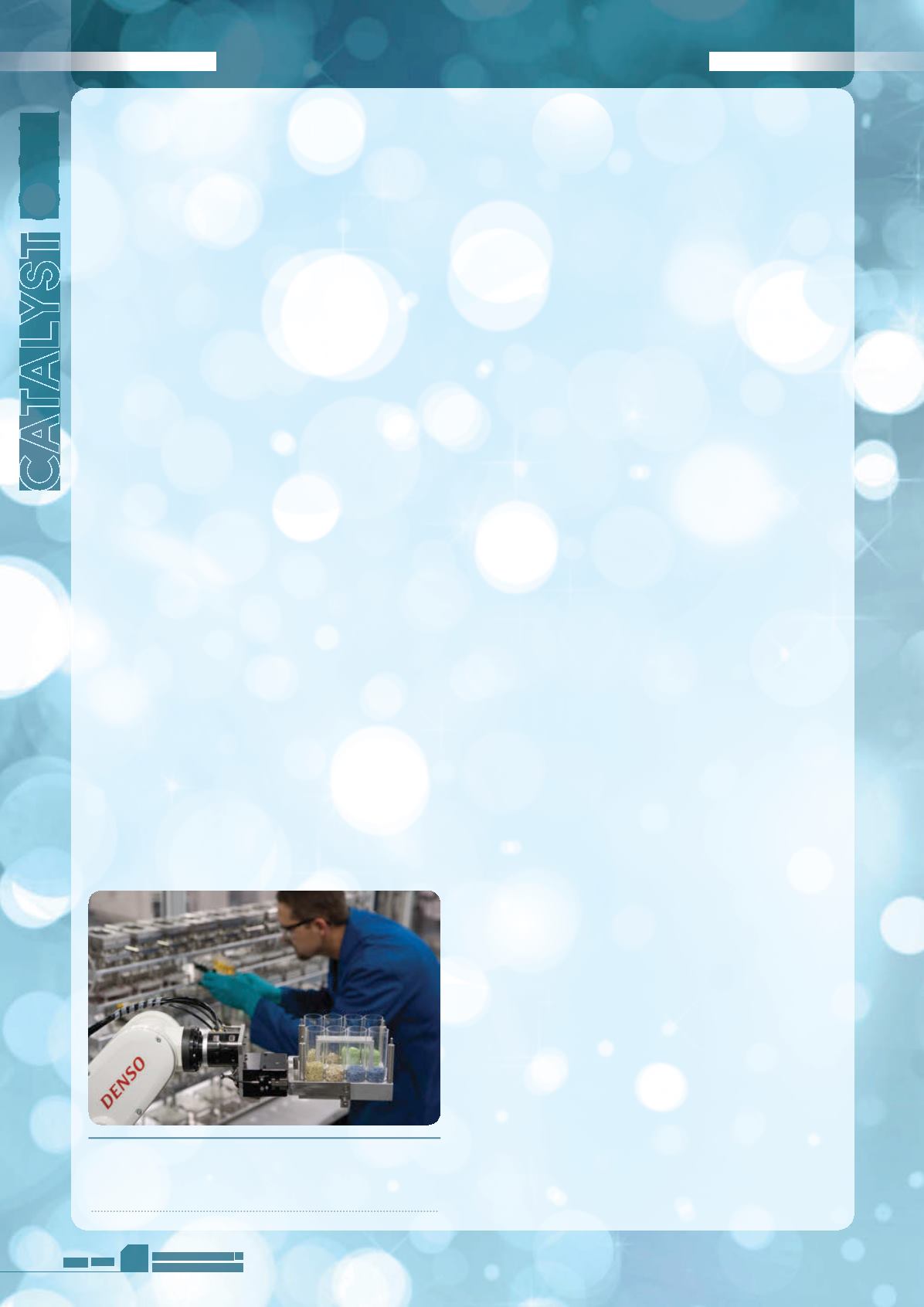
June
2016
HYDROCARBON
ENGINEERING
78
Q&A
DIANE CHAMBERLAIN, CRITERION
Q
Explain why catalysts are so crucial to refining and
petrochemical operations.
Catalysts are absolutely essential for refiners to maximise high
quality fuels and base oil production while allowing flexibility in
crude quality. When combined with advanced process technology
and efficient reactor internals, high performance catalyst systems are
among the smartest capital investments a refinery can make.
Criterion, along with Shell Global Solutions and Zeolyst International,
works with refiners to optimise those investments.
q
To what extent has the downstream catalyst market
grown over the past 10 years, and what have been the
driving factors?
The refining industry’s efforts to meet the global trend for more
stringent clean fuels specifications and air emissions, as well as the
growing demand for transportation fuels and the shift toward diesel,
mean that catalytic residue upgrading, cracking and treating have all
grown extensively. With refiners facing the squeeze between
constantly changing crude oil and refined products values, catalyst
technology has had to provide the solution refiners need to survive.
Criterion’s experience extends beyond a targeted process approach
to provide complete solutions including performance optimisation
and enhanced profitability.
q
How have catalysts changed since your company
began operating in the industry?
For nearly four decades Criterion has been a leader in tailor made
solutions for high performance catalyst systems within a wide range
of hydroprocessing applications. The company’s portfolio of high
performance catalysts and broad industry experience, have enabled
Criterion to evolve with the industry. Catalyst technology is based
on extensive research and development (R&D) in catalysts as well as
processes over many decades, combined with lessons learned from
operational experience. For example, catalysts that initially focused
on sulfur removal have evolved to remove nitrogen, open aromatic
rings, improve cetane and even performmild hydrocracking and
volume expansion, all in the same reactor.
q
How are new catalysts/catalyst technologies tested,
and how long does the development process tend to be?
Criterion has invested heavily in world class enhanced
experimentation equipment, as well as gifted and innovative
scientists, located in Shell’s three major technology centres,
Amsterdam, Bangalore and Houston. Criterion has long been
known for leading innovation and maintains its market leading
position by introducing a new family of catalysts every four to
five years, moving from CENTINEL
™
to CENTINEL GOLD
™
to
ASCENT
™
, adding CENTERA
™
and working with Zeolyst
International, to develop new families of hydrocracking catalyst
focused on middle distillate, naphtha and flexible operations.
q
What are the main obstacles when developing a new
catalyst technology?
There are two main obstacles. First, striking a balance between
innovative catalyst structures or materials and good physical
properties that allow catalyst to be manufactured, stored, loaded
and started up safely and economically. Refiners need practical
solutions and Criterion works extensively between R&D, catalyst
manufacturing and refining sites to improve catalyst solutions.
Second, anticipating catalyst performance under a wide
variety of feedstock and operating conditions. Criterion
extensively tests prototypes under different feeds and
conditions, developing systems of catalysts that work together
and can be adjusted by technical engineers to meet specific
needs. Criterion works closely with refiners to understand the
unique conditions at a site, pilot plant testing when needed.
q
What are the main applications for your company’s
catalysts or catalyst technologies within the refining
and petrochemical industries?
Criterion’s catalyst portfolio includes high performance
hydroprocessing catalysts for a wide variety of applications
throughout the refinery, from ultra low sulfur diesel (ULSD)
production to tail gas treatment. Criterion's hydrocracking
portfolio includes both feed pre-treatment and cutting edge
cracking catalysts. The company is a leader in residue upgrading
catalysts that are used in both fixed and ebullated bed reactors.
This robust portfolio combined with Shell Global Solutions
provides refiners with state of the art industry solutions.
q
What has been the company's biggest technological
breakthrough in terms of downstream catalysts?
In addition to activity gains, Criterion has made progress in
catalyst stability against metals and coking deactivation.
Unplanned downtime is the single, most critical factor impacting
refinery profitability and increased stability minimises the risk of
an early outage. Refiners can take advantage of the increased
stability and activity by processing heavier, more value added
feedstocks or increasing unit severity without significant cycle
life debit.
Q
What is the next 'big thing' in the downstream catalyst
market?
Criterion has made dramatic improvements in metals uptake and
conversion in residue upgrading catalysts, and can see strong growth
in both fixed and ebullated bed conversion capacity as refiners invest
in new technology to get closer to a bottomless refinery. The
company is also working closely on catalytic improvements in
middle distillate selectivity and yields for hydrocracking through a
joint development agreement between Zeolyst International, the JV
with PQ Corporation, and Rive International, a company with proven
Molecular Highway
™
technology in FCC catalyst.
High throughput testing enables Criterion’s R&D
to make advances in catalyst performance at a
previously unseen speed.


